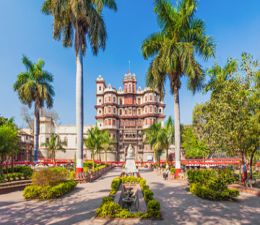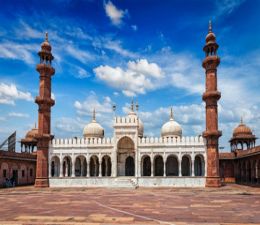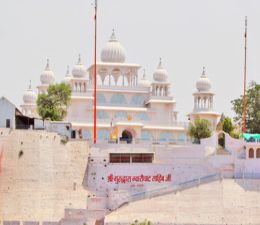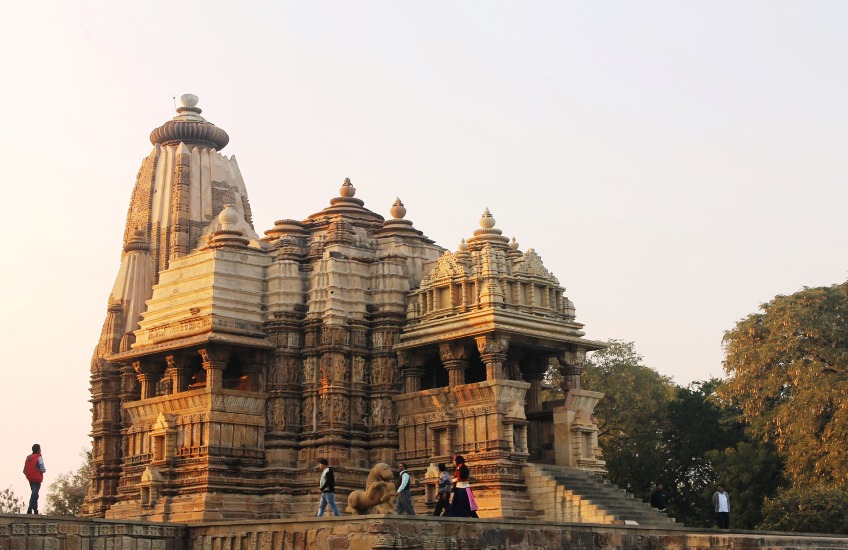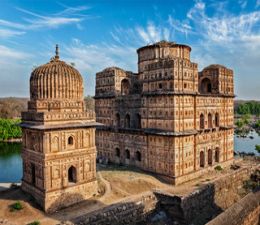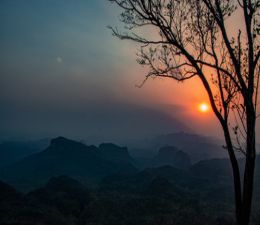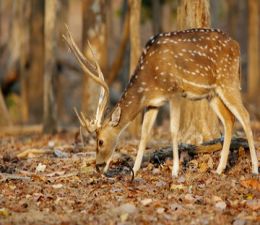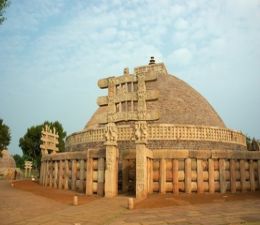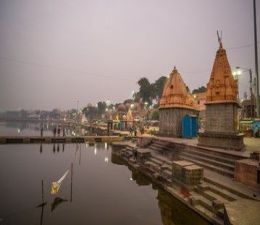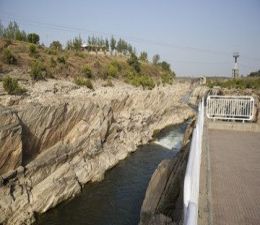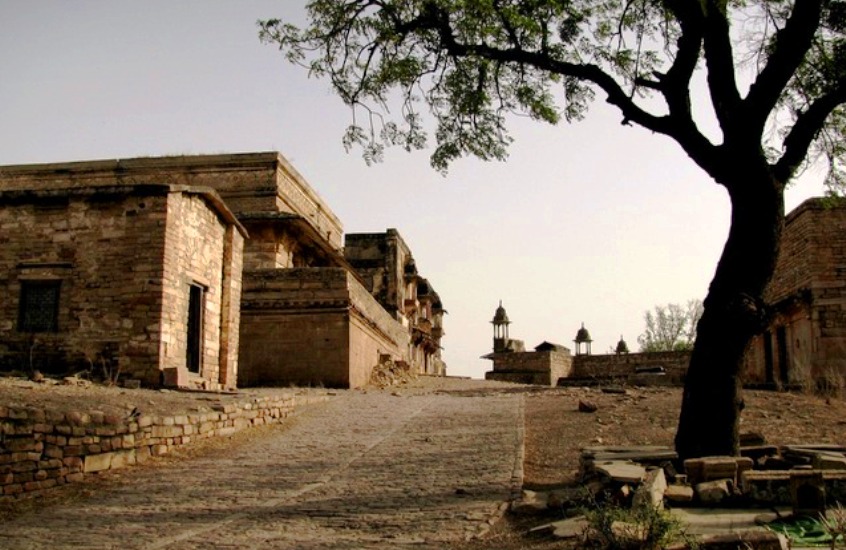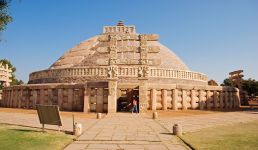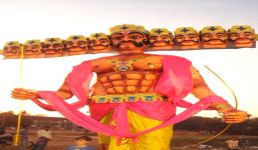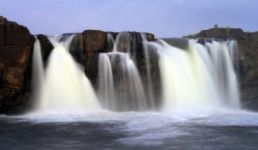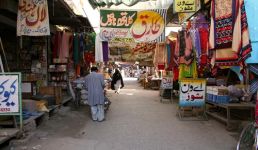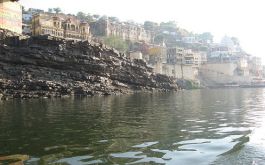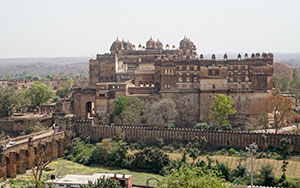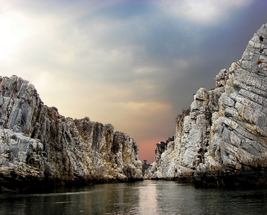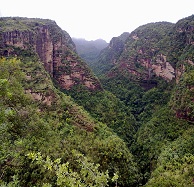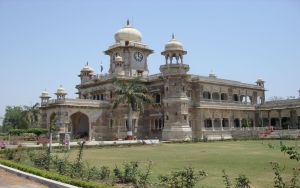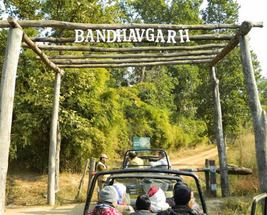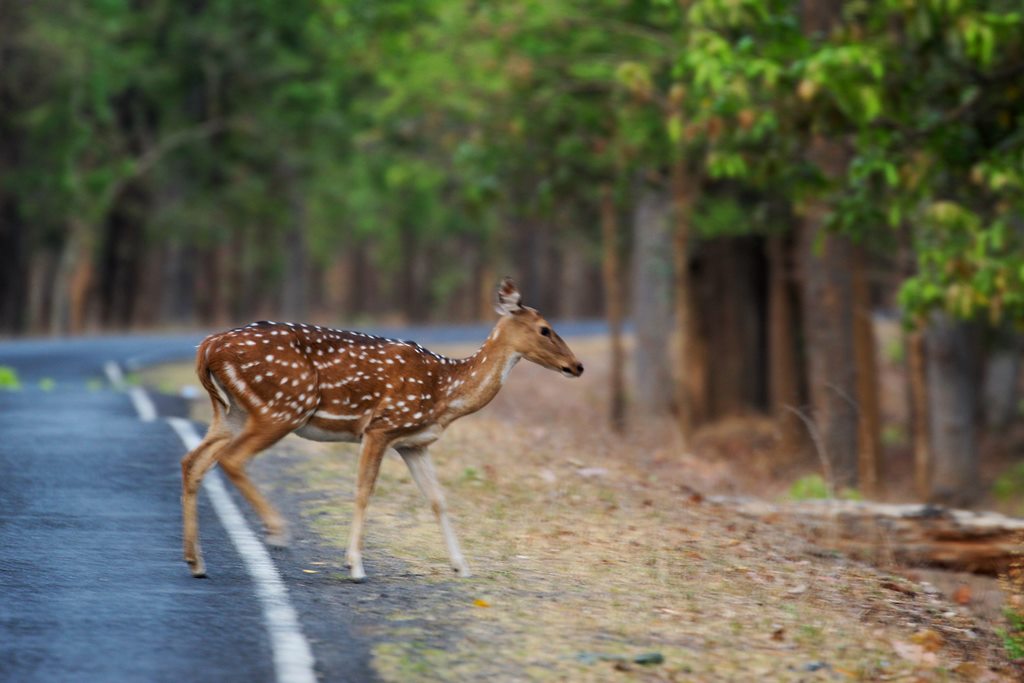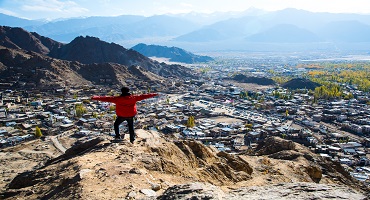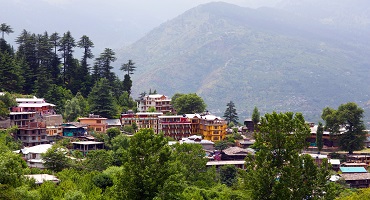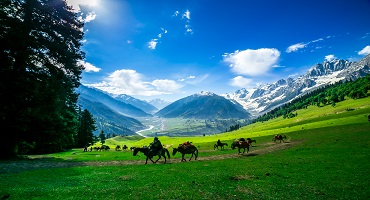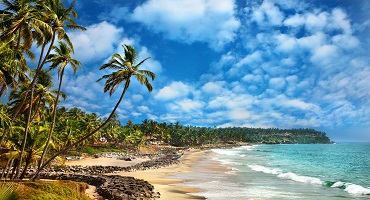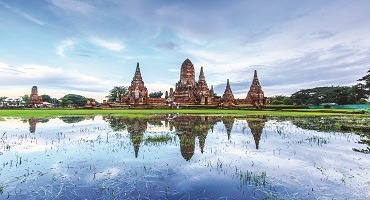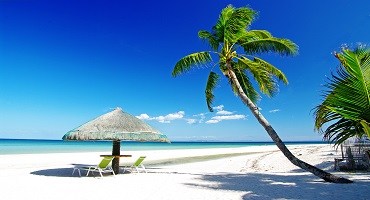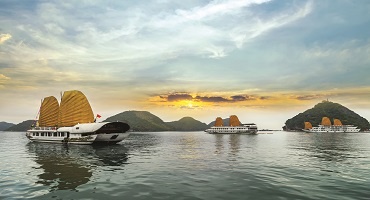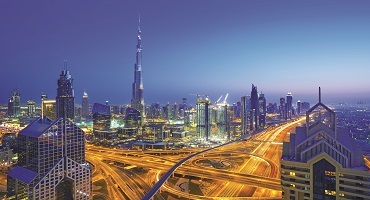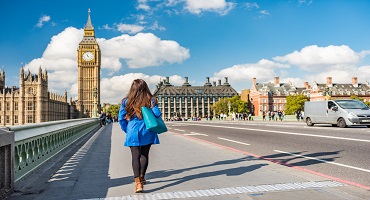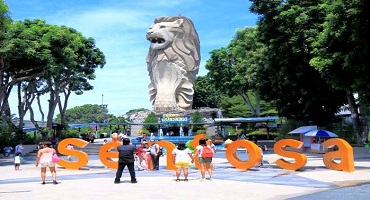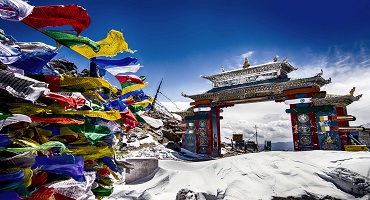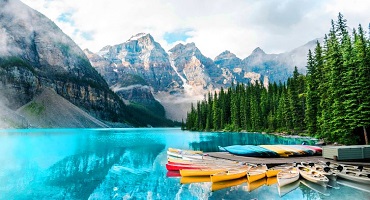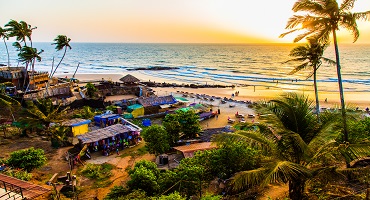Madhya Pradesh is a state in India’s central region. It is one of the most populated states in the country, sharing its borders with Uttar Pradesh, Maharashtra, Gujarat, Chhattisgarh and Rajasthan. Tourism in Madhya Pradesh has grown exponentially in recent years. It has been a crucial centre of history and culture in India since ancient times. From world-renowned religious landmarks and events to important ...Read More
historical monuments, Madhya Pradesh offers an unparalleled sightseeing experience to tourists. During a
trip to Madhya Pradesh, one can enjoy a remarkable range of natural landmarks, including hills, valleys, rivers, forests, etc. The unique blend of Madhya Pradesh’s vibrant culture and modern development has also piqued the interest of travellers from all over the globe.
Madhya Pradesh is home to several prominent religious sites in India, like the Mahakaleshwar Temple, Siddhanath Temple, Taj-ul-Masjid, Gurudwara Sri Betma Sahib, and so on. It is also a treasure trove for nature lovers and wildlife enthusiasts, featuring attractions like the Bandhavgarh National Park, Kanha National Park, Patalpani Waterfalls, etc.
Apart from casual tourism, Madhya Pradesh is an ideal location for adventure activities. Thrillseekers from all over India march to the region to enjoy river rafting, boating, rock climbing, camping, and other fun activities. Tourists also love to indulge in the local shopping and dining experiences during their trip. The pubs, bars, nightclubs and various entertainment options have made nightlife in Madhya Pradesh an amazing experience.
Attractions in Madhya Pradesh
Tourists from various corners of the world not only visit Madhya Pradesh for its famous landmarks but also for its grand festivals and cultural events. Here are some of the best Madhya Pradesh tourist places and events that you can check out during your visit:
Kanha National Park:
The Kanha National Park was created in 1955 and was appointed a tiger reserve in 1973. It covers a massive area of 940 square kilometres, divided into two protected areas called Banjar and Hallon. Wildlife in the park includes tigers, sloth bears, dholes, Indian leopards, etc. It is considered one of the best Madhya Pradesh tourist places for wildlife safaris. The park is about 34 kilometres from Mandla City.
Sanchi Stupa:
The Sanchi Stupa is one of the oldest stone structures in India. It is a prominent historical monument lying on a hilltop in Sanchi town, 46 kilometres from Bhopal. It was constructed under the orders of Mauryan Emperor Ashoka in the 3rd Century BCE. It is an outstanding specimen of Buddhist architecture and culture from that era. Its main highlights are its massive hemispherical dome and intricate carvings.
Gwalior Fort:
Located in Gwalior city, the Gwalior fort is believed to be in existence from as early as the 6th century. It features palaces, temples and water tanks and is surrounded by sandstone-built walls. Apart from the architecture, its main attractions include the Man Mandir Palace, Karan Mahal, Gujari Mahal and Jahangir Mahal. It is one of the best Madhya Pradesh tourist places for historical tours.
Pachmarhi:
It is a beautiful hill station in Madhya Pradesh, located at an elevation of 1,067 metres. Nestled in lush greenery, Pachmarhi is known for its serene atmosphere, scenic beauty and diverse wildlife. It is a popular weekend getaway and a famous tourist spot in the region. Some of its main attractions include Bee Falls, Jata Shankar Caves, Dhoopgarh, Pandava Caves, Pachmarhi Biosphere Reserve, Christ Church, etc. It is also one of the best places to visit in Madhya Pradesh for adventure activities.
Bandhavgarh National Park:
Located in the Umaria district, the area of the park used to be the hunting grounds of the rulers of Rewa. It is now a noteworthy tiger reserve known for its frequent sighting of tigers. The site houses over 22 mammals and 250 bird species and is one of the most famous Madhya Pradesh tourist places. Apart from its distinct flora and fauna, the national park is also home to the historic Bandhavgarh Fort.
Mahakaleshwar:
The Mahakaleshwar Jyotirlinga is a very important Hindu temple located in Ujjain city. Dedicated to the deity Lord Shiva, the spiritual significance and architectural beauty of the temple draw in visitors throughout the year. The Dakshinmukhi Mahakaleshwar idol makes it the most unique one out of the 12 Jyotirlingas in the country. It is a notable Hindu pilgrimage site in India, attracting thousands of devotees with its Bhasma-Aarti ceremony.
Jabalpur:
Jabalpur City, located on the banks of the Narmada River, is among the most famous places in Madhya Pradesh. Tourists visit the city to witness its remarkable natural landmarks and historical sites. Some of its most popular tourist attractions are Dhuandhar Falls, Madan Mahal Fort, Balancing Rock, Tilwara Ghat and Sangram Sagar Lake.
Mandu:
Mandu is one of the most fascinating Madhya Pradesh tourist places that you can visit during your trip. It is a crucial centre of history and culture in the region and is blessed with phenomenal architectural wonders. Some of its main tourist attractions are Rani Rupmati’s Pavilion, Jahaz Mahal, Baz Bahadur’s Palace, Jami Masjid and Hindola Mahal.
Khajuraho:
Khajuraho is a world-renowned place and home to several magnificent Jain and Hindu temples. These temples are known for their extraordinary architectural symbolism of nagara-style and intricate carvings of erotic and sensual themes. Most of these temples were constructed between 950 to 1050 AD. The main attractions in Khajuraho include Kandariya Mahadev Temple, Dulhadev Temple, Parshvanatha Temple, Vishvanatha Temple, etc. It is a prominent part of the Madhya Pradesh sightseeing aspect.
Taj-Ul-Masjid:
Located in Bhopal, the Taj-Ul-Masjid is widely known as the largest mosque in India. The mosque is inspired by Mughal-style architecture and features a beautiful main hallway with pillars, a pink facade, two 67 metres tall minarets with marble-built white domes, a large courtyard, marble flooring, a zenana, etc. It is one of the most beautiful Madhya Pradesh tourist places that you can visit.
Orchha:
Orchha is a town on the banks of the Betwa River and is one of the most famous places in Madhya Pradesh. This historical town was founded by Rajput ruler Rudra Pratap Singh in 1501 and was the capital of the Bundela dynasty. Orchha is a town full of rich history and home to several palaces, temples, murals and cenotaphs. Some of its main attractions are Orchha Fort, Ram Raja Temple, Jahangir Mahal, Laxmi Narayan Temple, Royal Chattris, etc.
Amarkantak:
Amarkantak is both a renowned hill station and a pilgrimage site in Madhya Pradesh. Located at an elevation of 1,048 metres, it houses some of the most magnificent temples in the state. Amarkantak is also known for being the birthplace of the Narmada River. The lush green forests surrounding the region offer delightful scenery to tourists. Some of its main attractions are Shri Yantra Mandir, Narmadakund, Kapil Dhara Falls, Trimukhi Temple, Bhrigu Kamandal, etc.
Bhimbetka:
Bhimbetka is one of the best places to visit in Madhya Pradesh to learn about human history in the region. It is a famous archaeological spot and was declared a UNESCO World Heritage Site in 2003. Bhimbetka is known for its rock shelters showcasing the earliest signs of human life in the Indian subcontinent. It features well over 500 caves and rock shelters, with numerous rock paintings. Some of these paintings are believed to be more than 30,000 years old. Bhimbetka is about 47 kilometres from the Bhopal city.
Festivals in Madhya Pradesh
Lokrang Festival:
Lokrang is a major cultural festival in Madhya Pradesh. It celebrates various forms of dance and music in the region, including folk and classical. It is a 5-day-long event that takes place during January in Bhopal. Organised by Madhya Pradesh Adivasi Lok Kala Academy, the festival aims to unite people through art, culture and traditions. It is also a great time to shop for authentic tribal handicrafts.
Khajuraho Festival:
It is a week-long festival that celebrates classical dance forms. It usually takes place during February in Khajuraho. This festival features dance performances at open-air stages in front of Vishwanatha and Chitragupta temples. Tourists attend this event to witness the beautiful dance forms of Bharatanatyam, Kathak, Kuchuipudi, Kathakali, etc., performed at a grand scale.
Ujjain Kumbh Mela:
Ujjain in Madhya Pradesh is one of the four cities that hosts the historic Kumbh Mela in India. This grand festival is held once every 12 years and attracts millions of devotees who come to take holy dips in the Shipra River to wash away their past sins. It is a major festival in Madhya Pradesh marked by devotional singing, mass feeding, fairs, bonding with like-minded people, etc.
Dussehra:
Dussehra is one of the biggest Hindu festivals celebrated in Madhya Pradesh. It usually takes place in the month of October or November and commemorates the grand victory of Lord Rama against the multi-headed demon king Ravana. During this festival, the entire state gets filled with a festive atmosphere. It is celebrated with fireworks, processions, delectable food, fairs, etc. Orchha is one of the best places to visit in Madhya Pradesh for Dussehra celebrations.
Diwali:
The grand Diwali in Madhya Pradesh draws in a massive tourist crowd. It is celebrated over a course of 5-days, starting with Dhanteras. During Diwali, every nook and corner of the state gets illuminated with candles, Diyas (lamps) and LED lights. The highlights of Diwali in Madhya Pradesh include its exuberant display of fireworks, traditional clothing, pujas, shopping, dance and music, and festive cuisine.
Tansen Samaroh:
This 4-day-long festival pays tribute to the legendary figure in Akbar’s court, Tansen. The festival is observed in Behat village of Gwalior district and is marked by performances of soulful folk and classical music of India near Tansen’s tomb. Enthusiasts from all over the globe visit Madhya Pradesh to attend the Tansen Samaroh.
Pachmarhi Utsav:
It is an annually held, 6-day-long festival that usually begins on 25th December and stretches till the New Year. The Pachmarhi Utsav takes place in Pachmarhi and showcases various forms of folk dance, like Matki, Bhagoria, Ahira and Raai. Other highlights of the festival include folk music, delicious regional food, shopping, etc. This renowned festival attracts the interest of both locals and tourists.
Activities in Madhya Pradesh
Individuals looking for fun things to do during their holidays can take advantage of the extensive range of adventure activities that Madhya Pradesh has to offer. Here are some of the most fun things to do in Madhya Pradesh that you can consider:
Water Sports:
There are various locations in Madhya Pradesh where tourists can go for water adventures. Among them, the Hanumantiya Tapu is the most famous one for water sports in Madhya Pradesh like motorboat riding, jet-skiing, banana boat riding, scuba diving, etc. It is about 48 kilometres from Khandwa and is a must-visit place in Madhya Pradesh for adventure lovers.
Hot Air Ballooning:
Hot air ballooning is an exciting thing you can try in Madhya Pradesh. It offers tourists a unique mid-air vantage point through which they can check out the region’s remarkable landscape. Pench National Park is one of the best places to visit in Madhya Pradesh for a hot air balloon experience.
Flying Fox:
Featuring a 520 metres long twin zip setup, the Flying Fox at Kerwa Lake, Bhopal, is a must-try adventure. It is a fast-paced thrilling adventure meant to get your adrenaline rushing. During this activity, you can get some of the best views of the lake and the surrounding greenery.
River Rafting:
River rafting is one of the most adventurous things to do in Madhya Pradesh. It is a challenging yet fun activity to try with friends. The Betwa River flowing near Orchha is one of the best places to visit in Madhya Pradesh for river rafting. It features Grade I and II rapids, ideal for beginners.
Boat Ride:
Individuals looking for slow-paced activities in Madhya Pradesh can opt for boating. It is a fun activity that allows tourists to get beautiful views of nature while navigating through the clear blue water. Some of the best places for boat rides in Madhya Pradesh are Upper Lake (Bhopal) and Marble Rocks at Bhedaghat.
Rock Climbing:
Rock climbing in Madhya Pradesh is a challenging adventure that will test your strength, endurance and dedication. Pachmarhi is a great place for this activity, where you can climb the steep rock formations of the Satpura Range and get magnificent views from the top.
Jungle Camp:
Jungle Camps amidst the dense forests are a great option to go for in Madhya Pradesh. It allows tourists to spend time and reconnect with nature, away from bustling city life, and engage in all sorts of adventure activities. Some well-known jungle camps in Madhya Pradesh are Delawadi Jungle Camp, Bagh Villas Jungle Camp and Pench Jungle Camp.
Nature Walks:
Walking amidst nature while admiring the surrounding forests, hills, lakes, etc., is one of the best things to do in Madhya Pradesh. It is a suitable activity for most individuals, allowing them to explore the natural wonders of the region at a comfortable pace. Amarkantak and Pachmarhi are some of the best places to walk amidst nature in Madhya Pradesh.
Wildlife Jungle Safaris:
Going on a wildlife safaris in Madhya Pradesh enables tourists to explore the region’s distinct flora and fauna in the most remarkable way. Some of the best places in Madhya Pradesh for this activity are Satpura Tiger Reserve, Kanha Tiger Reserve, Bandhavgarh National Park and Pench National Park. During these safaris, tourists can expect to see animals like tigers, elephants, deer, hyenas, etc.
Art Exhibition:
Art enthusiasts looking for fun things to do in Madhya Pradesh can visit Bharat Bhavan in Bhopal. It features a massive range of unique tribal and folk art, ranging between visual, verbal and performing arts. It can offer an in-depth look into the region's art and culture and be a treat for your senses.
Shopping in Madhya Pradesh
Shopping at popular markets and stores in Madhya Pradesh is another fun thing tourists do during their holidays. Here are some of the best shopping places in Madhya Pradesh:
Gwalior:
Gwalior is one of the best places to visit in Madhya Pradesh for shopping. The city has various popular shopping locations, like the Bada Market, Topi Bazar, Sarafa Bazar, etc. Gwalior is an ideal place to shop for high-quality Handicrafts, Maheswari Sarees and Chanderi Silk Sarees in Madhya Pradesh.
Jabalpur:
Jabalpur is another well-known hub for shopping in Madhya Pradesh. Sadar Bazaar, Ganjipura, South Avenue Mall, etc., are just some of the most famous locations for shopping within this city. Jabalpur is a great place to shop for terracotta items, Chanderi Sarees, Brassware, and Jute crafts.
Kandariya:
Located in Khajuraho, the Kandariya Arts and crafts centre offers a unique shopping experience in Madhya Pradesh. It offers various types of high-quality artefacts, mainly replicas of sculptures seen across the temples in Khajuraho. You can also shop for brassware, textiles, woodcrafts, etc., at Kandariya.
Roopayan:
Located in Mandu, Roopayan is a small showroom offering high-grade textile goods to tourists and locals. It offers a massive range of products, ranging from clothes, beadwork, and Gatha stones to Bhil Woodcrafts, footwear and Pithora paintings. Bagh print clothing is one of its speciality items.
Indore:
The availability of various markets, stores and goods make Indore a prominent place for shopping. Some of the most iconic markets within the city are Tibet Market, Heritage Market, Sarafa Bazar and MT Cloth Market. As for speciality items, Indore is one of the best places to visit in Madhya Pradesh to shop for brass jewellery, woollen clothing, footwear, handicrafts, etc.
Food in Madhya Pradesh
From munching on delectable street food to fine dining at a high-end restaurant, there are multiple choices to go for in Madhya Pradesh. Here are some well-known options to consider:
Restaurants in Madhya Pradesh
Indore Street Food:
Indore is a paradise for foodies, offering affordable and delicious dishes at every nook and corner of the city. From spicy Kachoris to tangy Dahi Bades, Indore has it all. Some areas, like Sarafa Bazar, Kalani Nagar, Sarwate, etc., are ideal street food hubs within the city. Must-try Indore street food includes Poha Jalebi, Sabudana Khichdi and Egg Benjos.
Under the Mango Tree:
Under the Mango Tree at Jehan Numa Palace is one of the most elegant places to eat in Bhopal. It is widely known for its beautiful ambience, courteous service and good food quality. It mainly serves Indian cuisine, and its must-try dishes include Tandoori, Kebabs and Biryani.
Mediterra:
Located at Sayaji Hotel, Mediterra is a fine restaurant that serves a good range of Mediterranean and North Indian cuisines. The beautiful rooftop ambience and view make it ideal for romantic dinner dates in Indore. Some of their popular dishes are Falafel, Zaffrani Malai Tikka and Paella.
Silver Saloon:
If you are looking for a fine-dining experience in Gwalior, consider checking out Silver Saloon at Usha Kiran Palace. You can go for the air-conditioned indoor seating or dine on the verandah while soaking in the outdoor view. Silver Saloon offers a multi-cuisine menu, including Indian, Nepali and Continental. Make sure to give their Halwa and Malpua a try.
Malaya Cafe:
It is a beautiful cafe near Bandhavgarh Tiger Reserve, offering delectable food to tourists around the year. It is well-known in the region for its affordable pricing and hospitable service. It also features a gift shop that offers a variety of high-quality local handicrafts. Some of their must-try items are lentil pancakes, lemonade and filter coffee.
Dishes in Madhya Pradesh
Bhopali Gosht Korma:
It is a specialty item in Bhopal and one of the most famous non-veg dishes to try in Madhya Pradesh. It is a gravy-based dish prepared by slow-cooking mutton alongside a variety of spices. It is usually served alongside Pulao or Paratha and offers a burst of rich flavour with every bite.
Poha:
Poha is a light but tasty dish in Madhya Pradesh, commonly seen at breakfast tables. It is prepared with flattened rice, onions, potato, tomatoes, nuts, etc., and has a signature yellow colour. It is garnished with lemon and curry leaves and served alongside curry-based side dishes.
Palak Puri:
As its signature green colour indicates, Palak Puri is a healthy dish with a phenomenal taste. This puri is prepared with a mix of dough made from wheat and a paste of spinach leaves. Pala Puri is best served alongside sabzi, raita or non-veg curry dish.
Nightlife in Madhya Pradesh
When visiting Madhya Pradesh, you don’t have to worry about spending any boring evenings due to its exuberant nightlife scene. Here are some famous places in Madhya Pradesh that you can consider:
Trance the Pub:
It is a popular pub located on AB Road in Indore. It is a great place to spend time with friends or meet new people in the city. It offers a beautiful ambience, along with live music, sports screening, affordable drinks and a wonderful crowd. It stays open till around midnight and is one of the best places to enjoy the nightlife in Indore.
10 Downing Street:
Located in Bhopal, 10 Downing Street is one of the most happening places where you can spend a wonderful evening. It is a contemporary English-style pub with brilliant lighting, wooden decor and a cosy seating arrangement. It remains filled with people and is a favourite hangout spot for youngsters, office-goers and tourists in the city.
Jalsa Club and Lounge:
It is a nightclub in Gwalior and one of the most known places for nightlife in the city. It is known for its neon lighting, spacious dance floor, live music and high-energy ambience. Jalsa Club and Lounge is a great place to grab a drink, unwind and meet new people in the city while dancing to upbeat DJ music.
Read Less




